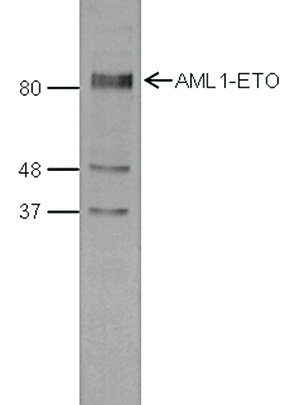This antibody specifically recognizes the AML1 (RUNX1) (UniProtKB/Swiss-Prot entry Q01196) - ETO (RUNX1T1) (UniProtKB/ Swiss-Prot entry Q06455) fusion protein that arises due to a translocation between chromosome 8 and 22 (t(8;21)(q22;q22)). This translocation is one of the most frequent karyotypic abnormalities observed in acute myeloid leukaemia. It produces a chimerical gene made up of the 5’-region of AML1and the 3’-region of ETO. The chimerical protein is thought to associate with the nuclear corepressor/histone deacetylase complex to block hematopoietic differentiation.








